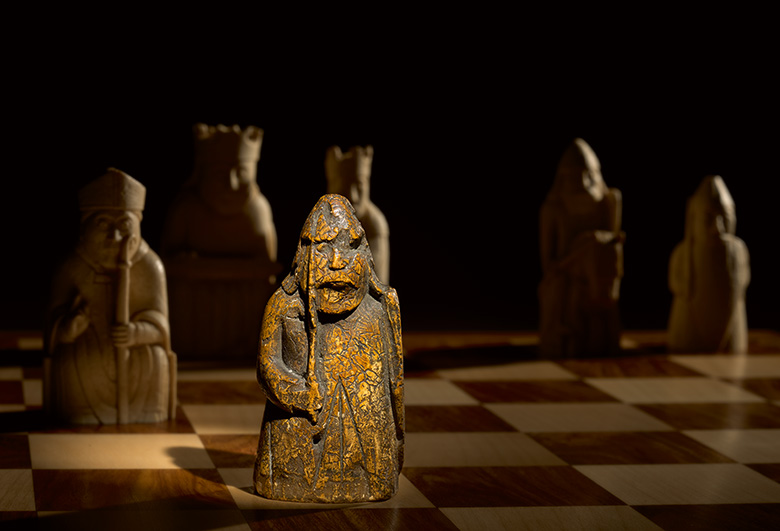
It's believed that these chessmen discovered buried in the sand on a Scottish island in the 19th century were made in Norway around 600 years earlier.
The recent story of the medieval chess piece picked up an antiques dealer for £5 that sold at auction for £735,000 has put the spotlight back on the story of the Lewis chessmen.
It's a remarkable story and one I have a close interest in. My mother was born on the Isle of Lewis where the collection was found in the 19th-Century, and I now live in Trondheim, where some historians believe the pieces could have been made.
An iconic link to the medieval world
These small carvings of kings, queens, bishops, knights and rooks made up as viking warriors are far more than just gaming pieces. They are some of the most beloved survivors of the secular medieval world.
Every year, millions of visitors admire the artefacts for free at the British Museum in London. Parts of the collection are also often loaned for display in museums around the world.
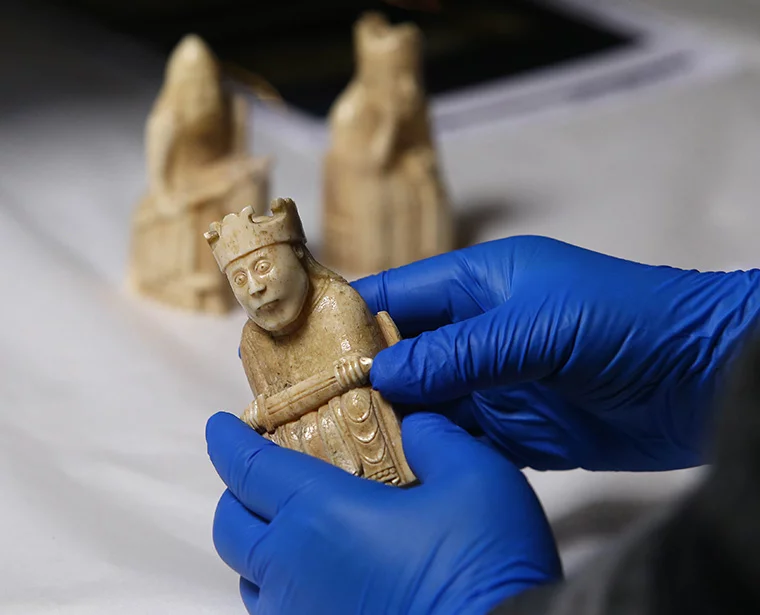
“These figures were created at a time when the abstract forms of the chess pieces introduced into the west from the Islamic and Byzantine worlds were anthropomorphised to reflect the courtly and military hierarchies of medieval society,” wrote the Financial Times.
The chess pieces also confirm the strong cultural and political connections between the Britain and Scandinavia in the Middle Ages. They also point to the popularity of chess, many centuries before Magnus Carlsen came along!
The original find
The details of the extraordinary discovery including the size of the find and the exact locaiton remain shrouded in mystery. Most historians agree, however, that the most likely location was the dunes behind the beach in the bay of Camas Uig, on the Scottish island of Lewis.
Locals say the precise spot was a small, drystone chamber that had since been covered by the sand dune. Many stories exist about how exactly the pieces were found, and how they came to be on the Outer Hebrides in the first place.
One common story is that they originally belonged to a merchant who travelled from Norway and buried the collection to avoid taxes. But it's the stories about their discovery in the 1800s that really vary.
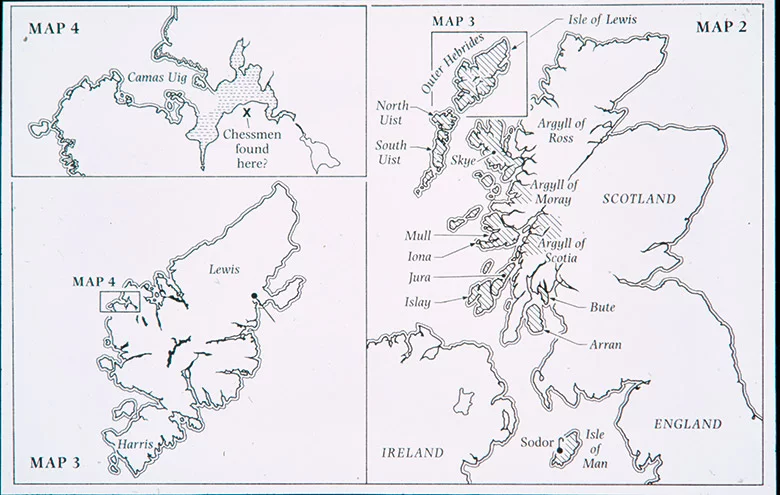
One popular local account tells of a grazing cow accidentally revealing the hoard. Other more fantastical tales involve a sailor swimming ashore from a ship moored in the bay, murders and concealment of the hoard, and more.
Things start to get a little clearer from 1831. That's when a collection of carvings including 59 chessmen were shown to the Society of Antiquaries of Scotland in Edinburgh. They were sold to an Edinburgh art dealer who resold 10 of them before persuading the British Museum to acquire the rest.
Some of those ten pieces remain ‘missing' while it's not known how many pieces, if any, remained on Lewis in the first place.
It is thought that there were originally four sets given the pieces in the collection. But ‘sets' is misleading—each individual piece is unique. Its character is determined by the size, shape and hue of the tusk or tooth from which it was carved. Each piece has also been impacted in different ways by the passage of time.
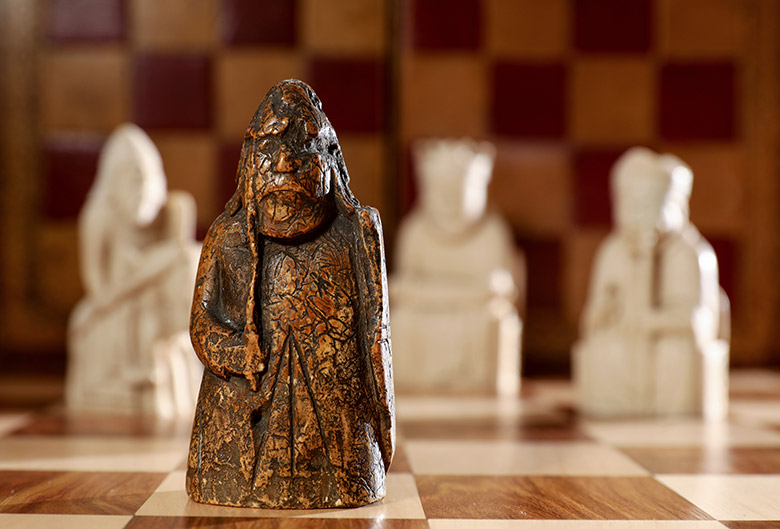
There is also, of course, the colour variety. Some were stained red when first received by the British Museum, although the majority have the off-white ivory colour. Most of the pieces have a web of cracks and channels thought to have been caused by the fungal effect of plant roots over hundreds of years.
Made in Norway, or Iceland?
Experts disagree on where the chess pieces were originally made, although the British Museum sides with Norway. Trondheim in Norway and Iceland are the two most common locations argued over.
Dr. Alex Woolf, Director of the University of St Andrews Institute for Medieval Studies, believes they were made in or around Trondheim. Evidence includes a similar style piece found in the excavation of the city's Archbishop's Palace, a similar carving in Nidaros Cathedral, and the striking similarity of the armour on the pieces to that worn in Norway at the time.
The recent find and sale
This summer, Sotheby’s auction house in London sold the first additional piece from the original find to have been discovered since 1831. Sotheby's expert Alexander Kader said that the find and auction of the Warder was one of the most exciting he’d seen in his career.
Bought for just GBP £5 in 1964 by an Edinburgh antiques dealer, the Lewis Warder was passed down through the family. Kept safely wrapped in a drawer for many years, the ‘new' chess piece fetched an incredible £735,000.
Read more: Viking-Inspired Lewis Chessman Sold For Almost $1 Million
Despite his expertise as an antiques dealer, the grandfather apparently didn’t know of the warder's significance. A family spokesperson said that the woman who inherited the piece was very fond of it:
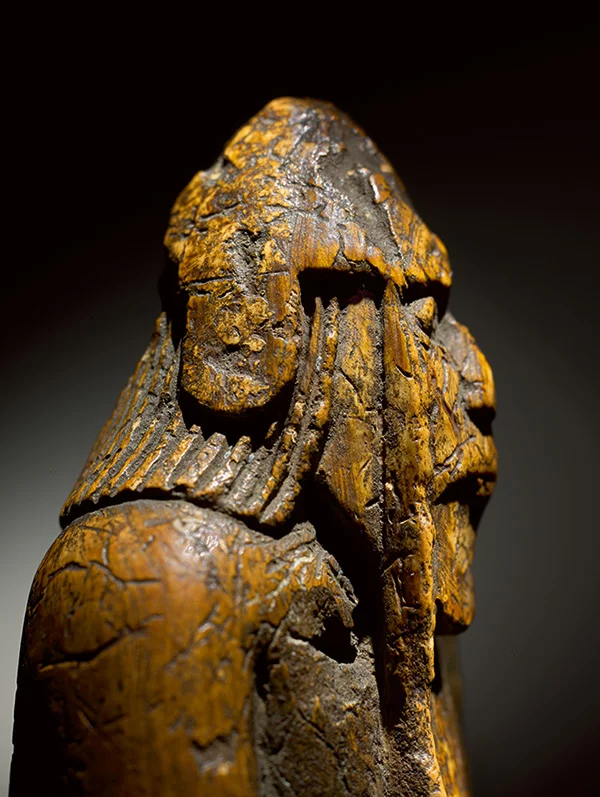
“She believed that it was special and thought perhaps it could even have had some magical significance. From time to time, she would remove the chess piece from the drawer in order to appreciate its uniqueness.”
A renewed interest
The recent rediscovery and sale of one of the missing pieces has renewed interest in the collection and its story. It comes on the back of a renewed interest in Norse Gods and the mythology as a whole. TV series including Vikings and Norsemen and Neil Gaiman's Norse Mythology fantasy novel have put the Norse era at an unprecedented levels of popularity.
That said, Norse mythology has rarely been out of fashion since its Scandinavian rediscovery in the 18th-century. They did fall out of favour a little after World War II, as some claimed a tenuous link with Nazi ideology. But retellings from children's authors soon put the cast of characters firmly back in popular culture.
There are still several pieces from the original Lewis find missing. Perhaps there's one hiding away in your grandma's dusty old drawer?

